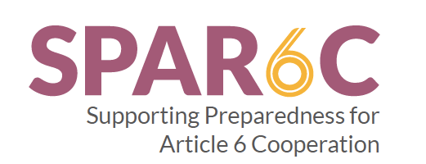This SPAR6C webinar will focus on decarbonization pathways for Pakistan’s cement sector. As one of the country’s most carbon-intensive and strategically important industries, cement plays a central role in achieving Pakistan’s NDCs. The session will explore how Article 6 carbon markets can mobilize finance for low-carbon technologies and enhance the sector’s global competitiveness.
Article 6 capacity building
The UNEP Copenhagen Climate Centre is organizing a series of webinars to build technical capacity for navigating Article 6 in key industrial sectors within Pakistan. These webinars and accompanying materials are designed to support sector-specific discussions on international carbon markets, focusing on national policies, project screening, financing, implementation, and best practices.
Following the introductory webinar on the fundamentals of carbon markets and Article 6, and the second session which explored mitigation opportunities in the waste sector, this third webinar will turn to the cement industry. As one of the most carbon-intensive and hard-to-abate sectors, cement plays a pivotal role in Pakistan’s climate action agenda and in meeting its Nationally Determined Contributions (NDCs).
Cement accounts for nearly 8% of global CO₂ emissions, and in Pakistan it represents around 65% of industrial coal use. In 2023–24, emissions from the sector were estimated at 40 million Tonnes of CO₂, with projections reaching almost 70 million Tonnes annually by 2040 under a business-as-usual trajectory. Importantly, more than half of these emissions stem from the calcination process in clinker production, while a further 40% arise from coal combustion in kilns. This unique emissions profile makes cement both a strategic challenge and a high-impact opportunity for climate mitigation in Pakistan.
Supporting a low-carbon transition
This webinar will showcase the findings of the SPAR6C study on cement sector decarbonization, with its authors, invited experts, and industry representatives presenting key insights on technologies, investment needs, and enabling policies. Speakers and panelists will discuss options such as supplementary cementitious materials, low-clinker alternatives like Limestone Calcined Clay Cement (LC3), alternative fuels, and carbon capture solutions. The dialogue will highlight how Article 6 cooperation can serve as a financing pathway for these technologies, creating opportunities for the sector to align with both national climate goals and evolving international market requirements.
As the third webinar in the series, this session aims to equip stakeholders with the knowledge and tools needed to engage in Article 6 cooperation, with a particular focus on carbon credit generation, financing models, and enabling policies for the cement sector. By strengthening technical readiness and building confidence among industry and government actors, the webinar will support Pakistan’s transition toward low-carbon growth and its active participation in global carbon markets.
Watch the recording here:
Download the presentations from the webinar here:
From Clinker to Low-Carbon Cement – Presentation – Denis Machnik
From Clinker to Low-Carbon Cement – Presentation – Anders McCarthy
From Clinker to Low-Carbon Cement – Presentation – Jonas Hagen
